#cancer treatment
Text

#yemen#jerusalem#tel aviv#current events#palestine#free palestine#gaza#free gaza#news on gaza#palestine news#news update#war news#war on gaza#support palestine#cancer treatment
2K notes
·
View notes
Text
Histotripsy works by using targeted ultrasound waves to form microbubbles within the tumor. The forces created as those bubbles form and collapse cause the mass to break apart, killing tumor cells and leaving the debris to be cleaned up by the immune system.
What that could mean for patients is treatment without the physical toll of radiation or chemotherapy, fewer concerns with drug compatibility, far shorter recovery times than with surgery and less treatment discomfort.
And histotripsy’s potential benefits go beyond tumor destruction. In the last year, a pair of pre-clinical studies in rodents suggest that in the clean-up process, the immune system learns how to identify cancer cells as threats. This can enable the body to continue fighting the initial tumor and help activate a natural immune response to the cancer.
In the first study, even after destroying only 50% to 75% of the liver tumor volume by histotripsy, the rats’ immune systems were able to clear away the rest, with no evidence of recurrence or metastases in more than 80% of animals.
1K notes
·
View notes
Link
Scientists at St. Jude Children’s Research Hospital have published their findings on SJ3149, a chemical with broad efficacy against various cancer types, particularly acute myeloid leukemia (AML). Scientists worked together to discover and improve a chemical molecule that functions as a molecular “super-glue” for a variety of tumors. SJ3149 binds to cancer-related protein casein kinase 1 alpha (CK1α), causing its elimination. The findings were published in the journal Nature Communications.
Have you ever wished you could just put a “Do Not Enter” sign on a faulty protein in a cancer cell? Thanks to molecular glue degraders, scientists are coming closer to doing just that. These ingenious tiny molecules function as matchmakers, bringing together a protein designated for destruction (the target) and the cellular executioner (an E3 ligase) in a lethal embrace. As a result, the target protein is tagged and disposed of, providing a fresh approach to cancer treatment.
Molecular glues work by hijacking the cell’s natural protein recycling system. The molecular glue binds the targeted protein to an enzyme, marking it for destruction via proteasomal degradation. For many cancer-related proteins that conventional small molecule inhibitors cannot effectively target, molecular glues may be a feasible therapeutic option. This prompted scientists at St. Jude to create a vast proprietary library of molecular glues and screen it against a variety of cancer cell lines, resulting in an early hit.
Continue Reading
138 notes
·
View notes
Text



although we've yet to come up with a solid plan for it, I want to start raising some money for my cat's cancer treatment as after moving across the country and just now starting a new job I simply don't have the savings yet to sink into this
we've talked to a surgeon who recommended seeing an oncologist first for possible radiation treatment. the current goal amount is just a placeholder for the time being. i plan to either apply for a vet credit card or loan to pay for his initial treatments
but for anyone willing to toss some change our way i am forever grateful! <3 went through hell getting my boy out here just to find out he has a serious illness. he's only 8 years old and i want him to live a normal healthy life by any means
39 notes
·
View notes
Text
NEW: Merck is charging $200,000 for the life-saving cancer drug Keytruda.
They’re making a fortune off it. But it was developed using tax-payer dollars.
That means the federal government has the little-known power to lower the price by taking Merck’s patent and giving it away.
[source: @/ MorePerfectUS. 12/21/23.]
Are we surprised the capitalists in the medical industrial complex are exploiting citizens in order to benefit the rich and affluent the most?? I think of Fredrick Banting -one of the original creators of Insulin -who said he would never put a patent on this life-saving medicine because it would go against/violate his vow to honor the Hippocratic oath he took... wanting to profit off of people's pain and illnesses is VILE, inhumane, and should be ILLEGAL.
#feminist#feminism#social justice#cancer treatment#fuck capitalism#abolish capitalism#late stage capitalism#capitalism is evil#united states#us politics#insulin#medical industry#medical industrial complex#current events#current news
22 notes
·
View notes
Text
A novel radiation treatment for cancer with a 100-percent success rate in its pilot trial is now in Phase 3 pivotal trials ahead of receiving Food and Drug Administration (FDA) approval.
Jerusalem-based startup Alpha TAU is expanding its trials of the treatment for skin and other cancer, after its first trial of 10 patients succeeded beyond the company’s expectations.

“Those patients got 100 percent CR [complete response],” Sofer says.
The pilot trial, conducted at multiple locations in the US last year, examined whether Alpha TAU’s DaRT (Diffusing Alpha-emitters Radiation Therapy) technology could successfully deliver targeted radiation therapy to patients with malignant skin and superficial soft tissue tumors that had returned or could not be removed surgically.
Alpha TAU had hoped that the treatment would be successful in at least seven of the 10 trial participants, but instead registered successful delivery to all 10. CT scans showed a 100 percent complete response rate at 12 weeks after the treatment and again at 24 weeks, with no evidence of the disease recurring in any of the subjects.
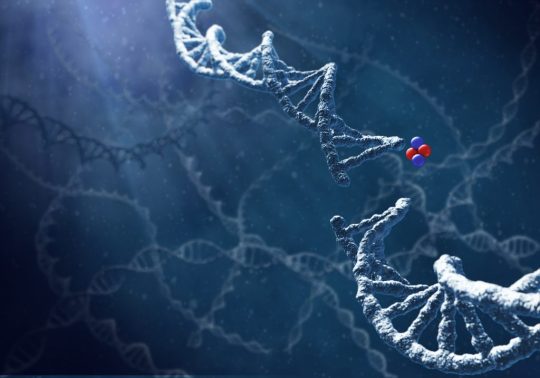
The results showed only mild or moderate side effects related to the device, and no systemic toxicity from it.
Radiation therapy for cancer normally uses beta and gamma particles. Alpha particles, while proving deadly for cancer cells in a tumor, are not traditionally used as they cannot travel far in solid masses.
Alpha DaRT, however, delivers the alpha particles directly into the tumor via a narrow device, inserted under local anesthetic, for a period of two to three weeks. The device is then removed and the patient monitored.
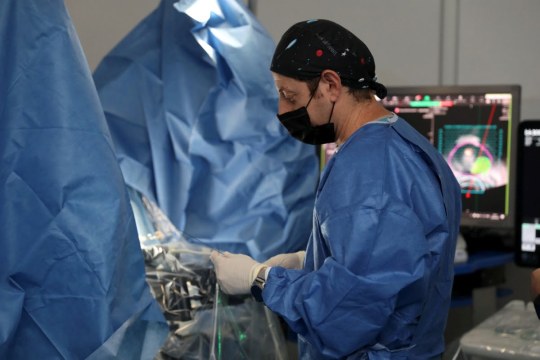
The findings of the pilot trial were published this month in the Journal of the American Medical Association (JAMA), months after submitting the results to the FDA.
The treatment is now undergoing its pivotal trial – the final one before the American agency gives it approval.
“We submitted the results that you see now to the FDA, and the FDA told us that we can submit the protocol for the last phase, the pivotal,” says Sofer.
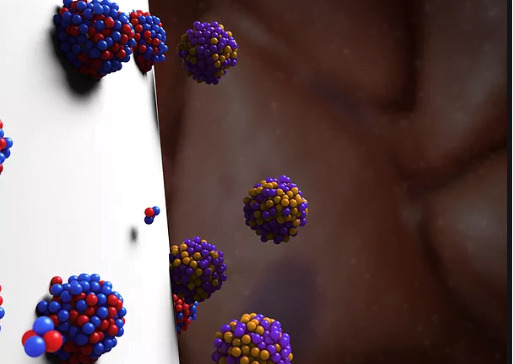
A pivotal trial is required by the US and European Union drug agencies in order to receive approval to market a new form of medication; studies can involve thousands of subjects and test the efficacy and impact of a drug.
Sofer says that the successful findings of the trial has led to medical institutes around the world clamoring to work with Alpha TAU, but for now research is limited to just a handful of locations for the pivotal trial.
“Many, many, many centers all around the world want to participate,” he says. “We are working with 20 centers in the US, two or three centers in Canada and another four in Israel that are going to participate in this trial.”
youtube
Sofer says Alpha TAU will be ready to submit the findings of the pivotal trial in around a year and a half from now.
“We will have six months of follow up, then we will analyze the results and send it to the FDA,” he says of the current trial. “The submission to the FDA can be in about 18 months from now.”
The revolutionary treatment is also being tried on other cancers, according to Sofer, who clarifies that, “right now it’s only for solid tumors.”
“We’re working on pancreas and lung and breast [cancer],” he says, explaining that the company is currently at various stages of testing for these other forms of malignant tumors.

The device itself is easy to use and does not require specialized and often costly equipment in order to treat patients.
“When it is approved, it will be for any hospital, medical cancer center, all over the world,” Sofer explains.
“You don’t need any special equipment, and you don’t need the shielding,” he says, referring to the protective gear used in other forms of radiation therapy but are not needed for alpha particles.
“It will be very simple to implement. You don’t need special equipment or investment in capital expenditure or something like that, [just] regular tools.”
69 notes
·
View notes
Text
Decoding the Pharmacological Symphony of Turkey Tail Mushroom: An In-Depth Analysis of its Chemical Composition, Immunomodulatory Mechanisms, and Implications in Cancer Therapeutics 🍄🔬
Salutations, esteemed Tumblr intellectuals! Brace yourselves for a cerebral sojourn into the pharmacological labyrinth of Turkey Tail Mushroom, an exploration that transcends the ordinary and delves into the intricate interplay of its chemical constituents, the sophisticated mechanisms of immunomodulation, and the far-reaching implications of its therapeutic potential in the intricate landscape of cancer biology. Prepare your minds for an expedition into the realms of molecular complexity, immune orchestration, and therapeutic promise. Grab your favorite scientific journal, a pen, and perhaps a lab coat, for this journey is not for the faint of intellectual heart. ☕📚
Chemical Symphony: An Elaborate Choreography of Bioactive Compounds:
In the molecular ballet of Turkey Tail, bioactive compounds are the principal dancers, each executing a meticulously choreographed routine. Polysaccharopeptides (PSPs), intricate glycoproteins with immunomodulatory acumen, command attention. Through the fine-tuned modulation of immune responses, these compounds stimulate various facets of the immune system, orchestrating an elaborate dance that amplifies the body's ability to recognize and eliminate neoplastic cells. Concurrently, beta-glucans, linear glucose polymers, contribute to this biochemical ballet by fine-tuning immune cell responses, enhancing the overall antitumor immune surveillance.
Navigating the Anti-Tumor Terrain: A Molecular Expedition:
Our scientific cartography navigates the expansive anti-tumor terrain mapped out by Turkey Tail's polysaccharides. The inhibitory effects on tumor growth and metastasis are akin to molecular fortifications against cancer progression. Through intricate mechanisms involving the activation of natural killer cells, cytotoxic T cells, and macrophages, Turkey Tail emerges as a sentinel, curbing the unchecked proliferation of malignant cells. Additionally, its antioxidative prowess, rooted in compounds like ergosterol peroxide, further shields cellular structures from oxidative stress, a nexus in carcinogenesis.
Immersive References: Nourishment for the Inquisitive Intellect:
1. Stamets, P. (2012). "Turkey Tail: Old Medicine, New Hope." Integrative Medicine: A Clinician's Journal, 11(1), 54–59.
- Stamets' exposé weaves a tapestry connecting ancient medicinal wisdom with contemporary insights, shedding light on Turkey Tail's multifaceted potential.
2. Wasser, S. P. (2011). "Current findings, future trends, and unsolved problems in studies of medicinal mushrooms." Applied Microbiology and Biotechnology, 89(5), 1323–1332.
- Wasser's comprehensive review acts as a meta-analysis, synthesizing the current knowledge landscape of medicinal mushrooms, positioning Turkey Tail within the broader discourse.
3. Sun, J. E., Ao, Z. H., Lu, Z. M., Xu, H. Y., Zhang, X. M., & Dou, W. F. (2002). "Antihyperglycemic and antilipidperoxidative effects of dry matter of culture broth of Inonotus obliquus in submerged culture on normal and alloxan-diabetes mice." Journal of Ethnopharmacology, 95(2-3), 285–292.
- In the realm of metabolic interactions, this study offers a glimpse into the potential implications of Turkey Tail compounds in managing hyperglycemia and lipid peroxidation.
4. Kidd, P. M. (2000). "The use of mushroom glucans and proteoglycans in cancer treatment." Alternative Medicine Review, 5(1), 4–27.
- Kidd's magnum opus serves as a compendium, dissecting the applications of mushroom-derived compounds in cancer therapeutics, providing a nuanced understanding.
Empowering the Community: A Call for Translational Excellence:
Knowledge is a potent elixir, yet its administration demands finesse. As we unlock the mysteries of Turkey Tail Mushroom, let us champion translational excellence, bridging the realms of bench and bedside. Always, without exception, seek the counsel of healthcare professionals, for personalized insights into the delicate interplay of molecular intricacies. Our collective journey extends beyond unraveling the pharmacological nuances; it's a clarion call to empower our community with the technical acumen to navigate the dynamic expanse of cancer research. 🌐💚
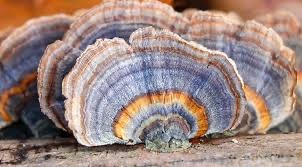
Your musings on this intricately detailed exploration are most welcome!
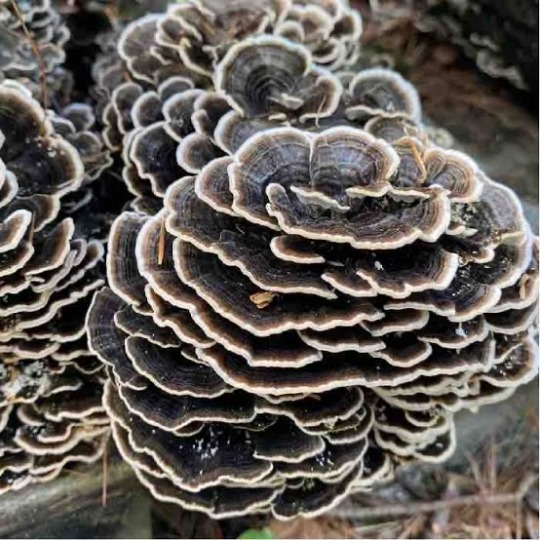
#science#biology#college#education#school#student#medicine#doctors#health#healthcare#mushrooms#turkey tail#chemistry#cancer#cancer treatment
24 notes
·
View notes
Text

We still need donations, every bit helps 🩷 please share if you can
7 notes
·
View notes
Text
https://news.engin.umich.edu/2023/10/these-bubbles-kill-cancer/
Locations in Europe and the United States treated 44 different patients with a total of 49 lesions. Several of those patients received their histotripsy at Michigan Medicine. Doctors were able to successfully target tumors in 42 of the 44 patients, with the two “misses’’ attributed to physician error. And the procedure worked as planned, striking and reducing the tumor 95.5% of the time.
Another indicator of human trial success is how many adverse events of any level of severity—from a high temperature to a toothache—crop up among the patient pool in the month following treatment. Only three patients of the group of 44 reported any issues, and all were minor.
#histotripsy#cancer#cancer treatment#sending all these links to tumblr instead of bombarding my friend whose husband might need this#as it is a bit Too Soon for this kind of helpfulness there
103 notes
·
View notes
Text
Please read about my friend Anan's situation. She and her mom are doing all they can to make money to pay for her brother's medical bills, but they really need help. Cancer treatment is expensive all over the world--Egypt is no exception. Kindly consider donating:
https://gofund.me/3c1f28d0
Porfavor consideren donar al "GoFundMe" de mi amiga, Anan. Su hermano esta recibiendo tratamiento de cancer. El año pasado, su bebe nacio con un defecto cardiaco y tambien estuvo que estar hospitalizado. Su familia necesita toda la ayuda possible.
Gracias 🙏💗
41 notes
·
View notes
Link
Cancer, a simple name for a complicated group of diseases, has long perplexed scientists and healthcare professionals alike. Despite years of research and medical advances, individualized therapy remains elusive. However, a recent study using multi-omics data is bringing us closer to understanding cancer’s weaknesses and maybe opening up new therapeutic options. By integrating diverse datasets across 1,768 cancer cell lines representing a spectrum of tumor types, the researchers created a comprehensive map of dependency markers – a treasure trove of potential targets for therapy. This map isn’t a one-size-fits-all blueprint, though. The beauty lies in its ability to reveal pan-cancer markers, common weaknesses shared across different cancer types, as well as tissue-specific markers, and unique vulnerabilities specific to certain tumors.
Cancer, a disease as diverse yet so deadly, has long provided a tough challenge to scientists and clinicians. While therapeutic choices have progressed, the elusive ideal of genuinely customized therapy remains out of reach. But a recent study, armed with the powerful lens of multi-omics data, is getting us closer than ever to understanding cancer’s vulnerabilities and leveraging them for therapeutic advantage. This research dives deep into the domain of dependence markers, tiny molecular flags that identify genes critical for a cancer cell’s survival. Think of them as Achilles’ heels – hidden weak areas that, when targeted, could bring down the seemingly unbeatable cancer monster. The study carefully examines four main sources of information: mutation, gene expression, copy number, and pathway activities.
Continue Reading
53 notes
·
View notes
Text
please donate and share to help my girlfriends aunt
22 notes
·
View notes
Text
Hey baby, wanna see my port?

17 notes
·
View notes
Text
Donations for an emergency surgery needed.
So, three months ago my mom was diagnosed with breast cancer, and had to have a double mastectomy. Thankfully, we are privileged enough to leave in one of the few municipalities in Caracas (and even Venezuela) with a somehow reliable, publicly subsidized health care program that allowed for my mom to have her surgery and the reconstructive surgery right away. We had to pay for the surgery but nowhere near as a much as we would have had to pay without this program. It's still been a huge strain on us.
However, reconstructive surgery often come with complications and my mom's right implant will have to be removed due to complications due to infections and stitches that won't heal completely. This one will be her third surgery, in as a many months. I know a few months ago I started a donation post to go visit my grandma, after my mom's diagnosis I had to put all that money into her treatment. Thankfully we have received the good news that she won't need chemo, which can be a very hard treatment to do in Venezuela due to economic and social conditions.
Still we'll need to pay for her next surgery, and in three months she'll probably have surgery again to try and put in a new implant.
I hate having to do this again, but at the moment I have no options left. I am currently training for a new job, but still haven't started formally and I won't be paid for training.
If any of you can spare to donate anything, I would inmensely appreciate it, and if you can not donate simply reblogging this and allowing for others to see it will help, too. Any help I get will be appreciate it.
Thank you all in advance.
My paypal is [email protected]
#donations#cancer treatment#emergency surgery#healthcare#health#politics#venezuela#personal donations#signal boost#batman#hotd#house of the dragon#daemon targaryen#bucky barnes#sam wilson#surgery#donations needed
100 notes
·
View notes
Photo

A (very) early shot of radiation treatment, May 16, 1924. A cancer patient is lying under a 200,000 volt super x-ray machine developed at Columbia University by faculty from the Department of Physics and engineers from General Electric. The patient is protected by lead shields with only the cancerous area exposed.
Photo: Underwood Archives/Getty Images
#New York#NYC#vintage New York#1920s#cancer#cancer treatment#radiation#radiation treatment#Columbia Univ.#General Electric#medicine#May 16
367 notes
·
View notes